
Garhan
-
Posts
67 -
Joined
-
Last visited
-
Days Won
6
Content Type
Profiles
Forums
Events
Store
Posts posted by Garhan
-
-
This is also the thread I use on just about all the flies I tie including Salmon, Steelhead and Predator flies for Pike, Tarpon, etc...That is why you never see thread behind any of the bead patterns I tie. Nano Silk 12/0 and 18/0 for nymphs wets and dries and 6/0 for the larger stuff, but I do tie Intruders with the 12/0.
Fish Tales carries the thread in Calgary and Nile Creek in Comox.-
 4
4
-
-
The Buzzers are coated with Bug Bond. Sorry for the late reply. It has been a busy summer and fall.
-
Thank you all for the comments.

-
UTC Wire for added weight.
-
-
-
Ask Geoff Peiroway.
-
 1
1
-
-
-
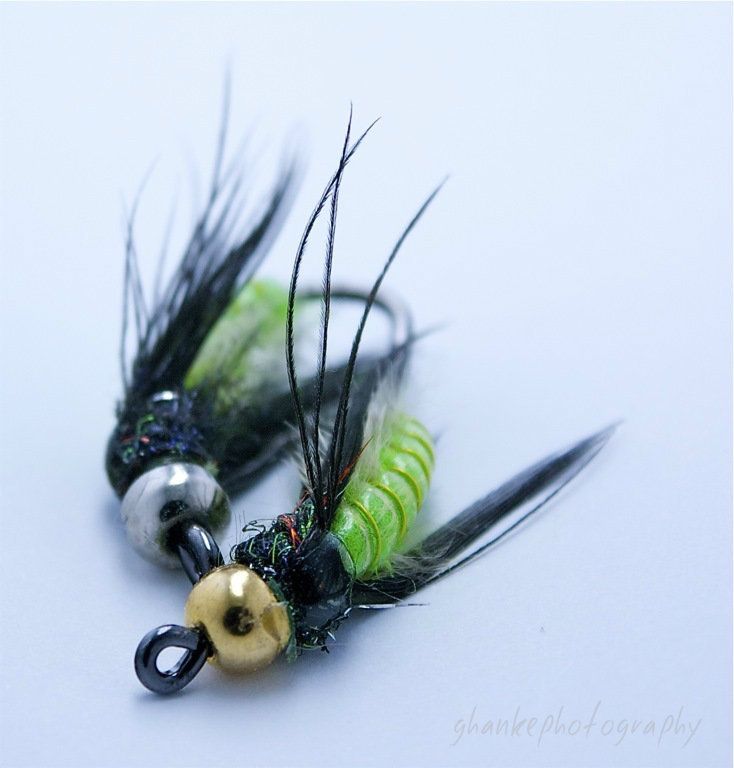
Some size 12 Green Caddis Emergers to replace those lost last year.
-
 3
3
-
-
I know that I wouldn't put as much stock into computer modelling. Maybe in a best case scenerio some thing like this ***might** happen. There are to many unaccountable variables in this situation to find very much truth to this type of conclusion. Remember this is only a computer model.
-
Alrighty, that wasn't so tough.
here's a few from one of my favourite spots:
very nice
-
My goal for the summer is to catch a walleye on the fly!! Plus get lots of Pike while hunting for the walleye
 Getting ready with some perchy clousers and bunny bugs
Getting ready with some perchy clousers and bunny bugsThose should work very well. Walleye and Sauger in the rivers will gobble those up. Consider tying a few in orange as well.
-
Broke my back in my teens, just a stupid kid took a dare when downhill skiing. Undiagnosed for 10 years if you can believe that and suffered for those 10 years.
Anyhow, suffered big time with sciatica for years but when I started seeing a chiro, it became manageable. Suffer pain, go see the chiro.
However, this last round doesn't stem from my back at all, it's an aggravated sciatic nerve deep in my left ass cheek under the hip bone and there's nothing that can really be done with it according to the chiro. Hits hard and heavy when i'm out flyfishing - spent most of my 2 weeks in banff last year flyfishing from my knees cause it was less painful...
If there's anyone else dealing with this sort of sciatica, is there anything that helps? I was going to hit the bow today but my left glut was telling me no.
I suffer the same thing got speared in the back while playing football in college. I go monthly to a chiropractor and use an inversion table(Costco sells them) a couple of times a month. I will not take any medication for the pain. It is constant, but at times the sciatica nerve just get so bad it puts me to my knees. There is a new back pain clinic out in Edmonton there maybe one in your city as well. Supposedly they do miracles with no surgery. The wife is always after me to go there, and one day I will.
-
Over the last couple of decades we have been running 2-downriggers and a topwater line in June on Cold Lake with 3 of use in the boat. The top water line is a dry line or a slow sink. June on Cold Lake has the lakers feeding in the top 30 feet or less on many occasions. The lakers are loaded with Cisco or Tulibee. It works well. The leader on the dry line is usually a 0X with about 5 feet of 0X or 1X tippet attached. Flies are tied to resemble Cisco, so lots of white, blue, small amount of pink and silver flashabou.
-
...
..here is a pic as to what I was talking about, they come in various colours, plus they contain a tab of stick on eyes with each pack..I personally just bought the smaller size, [in three colours], for I can control my casting to a certain size of fly without getting them in the back of my head sorta speaking..anyway..here's the pic..

..if I were you m8..I'd wait a bit on buying any of that goo, for they are coming out with a new 'goo' that doesn't have that sticky touch to it after wards..as it does now, as far as other material is concern in creating wings, but again it is Not a 4-7" fly but has taken quite a few hits is with Alpaca Fibre..which you tie in a loop, then brush it out/pick it out to make the long fibres wave in the current..it makes a good fly of 3 to 4, sometimes 5" fly..as in the next pic.......................AW

this leech is around 4" long...
Oh those, I seen them at the LFS but didnt really look. On a different mission at the time. Looks good though, might have to try some out as well. I will hold off on the goop as well. Still have a fair bit of the Tuffleye still around, need to use that up first. Not to many Pike can resist a leech at any time of year, I would think.
-
hello was woundering what the wing materials were in the bull trout flies they look killer and would like to tie a few cheers and thanks for the information.
EP Fibre, SF Blends and/or Polar Bear Hair. Thank you.
-
well, I just finished one that I think will do well with both fish..this fly was created with just two different materials, rabbit fur and marabou, and of course a new type of finish for me that is..Clear Cure Goo..I never use that tuffleye, for over time it does turn a yellowish colour [which I'm sure the fish don't mind]...anyway ur comments please.................Wolfie

Plus I've tied a 'loop' of a bit of "Steelon" to the shank of the hook so that in the event that a stinger is required, I can put one on in minutes...
Wolfie , thank you for your comments.
I really like that fly and there is no doubt it will work very well on Northern Pike. I havnt used the Clear Cure Goo yet. There was an article I was reading on it and t sounds great. The Tuffeleye we have been using does discolour after a few weeks. Doesnt make it a bad product, it just discolours. Thats not as important here in the freshwater world to me, but would likely be more adverse in the flies for some salt water species. Being prepared to use a stingers is better than not having the ability when needed. Dont you think. It does take much to get it ready.
-
Yeah it is quite the place... Mumbai was "interesting" - my eyes never stopped stinging! I'd go back to India in a heartbeat!!
P
Yeah I know and fogging the plane was an experience as well. India certainly has its mysteries, its people are so resilient, the coal dust is bad, same with Delhi, but the food is great and I liked the yards of ale at the Leopold cafe. Yeah I would go back to work there any day. Where you there during the rainy season?
-
Interesting photos! Having been in India quite recently we saw 1st hand how they dispose of there plastic water bottles - right out the train window (with the rest of their garbage)!! At least our "recyclers" get a pretty penny to collect... Some parts of India give a (very minimal) refund (deposit), most places do not...
P
Yeah India is quiet the place. Those photos are from Mumbai.
-
No secrets here. You ask and I will answer the question the best way I can.Very informative Garhan..most of the flies you have posted will take water-wolves quite readily, for those that don't know the term, they are Pike, and your colours are not as vibrant as what would use, example, the more bright colours posted by Bhurt.....where as bright colours are a key for pike..are they the same for the Alberta Bull Trout ? They can be, but I believe the twist is more towards brighter natuarl shades like white and of course the flash from mylars, flashabou etc...it seems to make a significant difference on my home waters of the Athabasca.
..maybe I'm wrong , but are you using the EP fiber to create Ur flies..the suggestion is the long thick fibers forming the wing..which seems to be standard in the over sized flies.. Yes Ep Fibers, SF Blend and Polar Bear, but I tie it pointing forward and then pull it back and build a dam at the eye to keep it somewhat laid back. The saltwater tiers seem to run this technique a fair bit on there designs. It works well to keep the front of the profile fuller looking with the body tapered back and it seems to pulse more as the fly is moved through the water. By pulse I mean it opens and closes the fibres or breathes more. Hard to explain.
..also notice that you are creating epoxy heads on them..what is your opinion on the new 'fish heads- with stick on eyes'...and...are you putting lead wraps on the hook shanks prior to forming the body.. The new heads I'm not sure which heads you are speaking of. I haven't used to any of the new heads. The Tuffleye seems to work OK though. I will have to try them one day I guess. Sometimes as well I will put up to 30 wraps of .31 leadwire on the shanks if I am building a body from chenille or Mylar tubing.
..just a few questions to get you to reveal more of the hidden secrets of creating flies for Bull Trouts.............Wolfie
Wolfie, thank you for the response. I almost don't want to say to much, because it seems to offend some people here. But these question are directed to me and not to them, so here goes.
-
http://www.authorstream.com/Presentation/u...-ppt-powerpoint
I have been in the patch over 30 years now. But there are still some realities that are hard to swallow. In some parts of the world I have worked in, plastic bags hang like leaves on the trees. The amount of plastic around the world is not a good thing. Oil patch or not.

Here is some recycling of plastics in another part of the world.


-
Very informative Garhan..most of the flies you have posted will take water-wolves quite readily, for those that don't know the term, they are Pike, and your colours are not as vibrant as what would use, example, the more bright colours posted by Bhurt...
..where as bright colours are a key for pike..are they the same for the Alberta Bull Trout ?
..maybe I'm wrong , but are you using the EP fiber to create Ur flies..the suggestion is the long thick fibers forming the wing..which seems to be standard in the over sized flies..
..also notice that you are creating epoxy heads on them..what is your opinion on the new 'fish heads- with stick on eyes'...and...are you putting lead wraps on the hook shanks prior to forming the body..
..just a few questions to get you to reveal more of the hidden secrets of creating flies for Bull Trouts.............Wolfie
The water wolf is a predator that will hit just about anything that is big or small as long as he thinks it is prey. I guided the US air force staff out of Cold Lake during Maple Flag for many years, to fish Northern Pike on a flyrod. Usually we started guiding as soon as the ice came off the regional northern lakes. This would have been as early as the last week of April, but usually started around the first or second weekend of May and went to mid June. This is usually the post spawn and pre-summer period for the region.. At this time of year Pike are either in the Spawn Period or Post Spawn Period.This is a sum of 10 years of guiding those lakes.The colour variations I always felt that brighter flies on bright days worked better and darker patterns on overcast days or water that was so wind swept it had become murky. (General rule of thumb) Remembering that the general mood or behaviour changes during these calendar periods. During Pre-Spawn these fish are at the top of there cycle as far as health is concerned.Spawn is usually neutral even a negative in there behaviour and are usually striking out of being territorial but not consumed in eating larger meals. Post Spawn more often is an aggressive behaviour and the larger fish (hens) are feeding up to recover from the spawn. We usually found large hens cruising in and out of the shallow flats in 2-4 feet of water between 10:00 am and as late as 3:00 pm with many smaller males lurking about. As the season moves on the larger hens where caught in deeper water more consistently, say over 6 feet.
As for colours it varied with water clarity and light penetration.
I use now EP Fiber, Polar Bear Hair and SF Blends on the patterns trying usually to imitate the following prey species. Lake Suckers, Perch, and Cisco/ Tulibee. I try also to imitate the prey fish profile more than anything. Perch and Suckers have a larger or heavier frontal section and Tulibee or Cisco are more of a tube shape.
If I am fishing in 6 feet or less water I use a floating line and allow the fly to sink on its own. You can of course always weight the fly, but for this shallow a water I don't find it necessary. Many of the salt water style of tying techniques work extremely well on these flies.
As for the Bully Flys when I am trying to tie a fly for them I always ask myself what is the primary prey for the Bulls in this local water. Once again I try to target out at first the largest common prey they would encounter in there home water. Be it Whitefish, Grayling, Emerald Suckers, Red Horse Sucker, ( scuplins)smaller prey what ever you have. Then I look at profile and colour from that point in the design of the fly. An over looked colour variation would be a spawning male Red Horse Sucker with its bright red and black flanks. It pays to know the prey as well as we understand our entomology and the insect trout encounter and feed on.
You can use most of these flies on other species as well, such as Gerard Rainbows,Lake Trout, Bass, Walleye, Peacocks and Muskie.
But keep in mind I am no expert but I am consistent in catching both of these species as targeted fish.
-
 1
1
-
-
I've caught all my bigger bulls on double bunnies, but I've heard that Clousers work as well. Can anybody corroborate this? I've tied up a bunch of 3-4" Clousers with big lead eyes in combinations of white, chartruese, yellow, and black.
I love fishing for bulls, but I find that they are much more difficult to set the hook on than other trout. Any thoughts?
Stiffer rod maybe?
-
Here are a few we use, in southern Alberta. Double Bunnies work as well and we usually tie them in a 4/0 with a #2 stinger or ready of a stinger. I drop down to a Bunny when the fishing is slow, otherwise we search the water with a 7inch fly.

 Garhan noticed that most of the stinger hooks are up is there a benefit to up or down with the stinger hooks.
Garhan noticed that most of the stinger hooks are up is there a benefit to up or down with the stinger hooks.Tight Lines Always
Dennis S


Hi Dennis,
There are several philosophies to this. First note that all these flies the stinger can be removed. I switch to a stinger or lack of a stinger based on the fishes general aggressiveness for the period, day or hours, etc.. Fish when feeding are different in behavioural patterns based on biological demands, Pre-Spwan, Spawn, Post Spawn, Pre Summer, Summer Peak, Summer, Post Summer, Fall turnover, Winter, etc.... These periods are based on environmental changes, or condition of a body of water. These periods vary in length and are not subject to a calendar period. i.e May, or September, and can be 10 days long to 90 days long or longer..Some ppl assume that the best time to fish is when the water temperature is at an optimum for a trouts metabolism, causing it to feed the most. We can assume most large trout are predator's based on requirement of larger solid foods to meet there daily nutrient intake (yes they will still eat smaller insect, etc..). When predator fish are usually eating the most is when the food is also the most plentiful. It doesnt always work that way. And a species preferred water temperature does not always indicate a time when the fish is easiest to catch. On the other hand adverse temperature does not always mean fish are hardest to catch. In fact, this is particularly true with late fall trout, which is often the best fishing on a body of water for the year (Backswimmer season). The available food supply, the timing of the feeding movements, overall population levels and competition, seasonal density of cover all play a role in angling success. The difference between the truly successful and unsuccessful flyfisherman often boils down to two things. Successful anglers notice the seasonal movements and probable response pattern of a trout to a fly. Fish are usually rated in there feeding behaviour or General Fish Mood as neutral, positive or negative. When I determine this general mood on a body of water or section of water. It will indicate to me when I should run a stinger. Trout when in a negative state often (especially Bullies) will hit a fly and just hold it. Often you do not even feel a tug. They will hold the fly for awhile at the mid section of the fly. If you don't notice this then you loose the the fish. This is where I use the stingers. If they are on a positive feeding behaviour then the stinger usually isn't necessary as they more often hit the fly in the head area.
As for the stinger being pointed up or down I would call that personal choice.
There is a lot more to this as well. We can discuss further if you like.


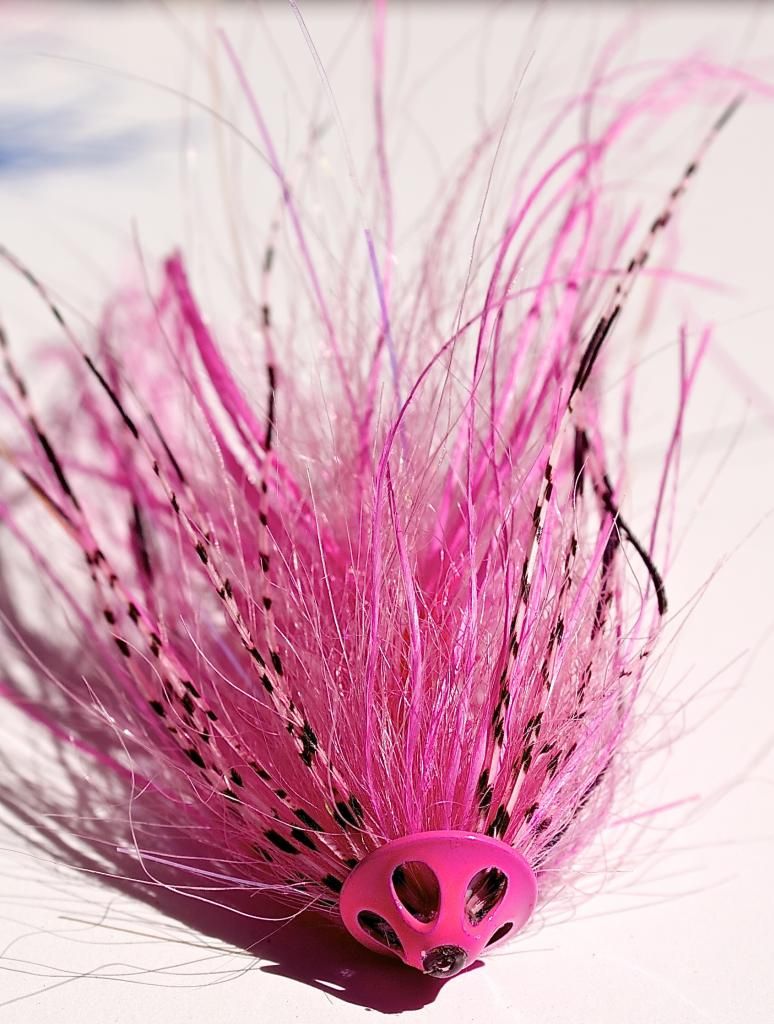
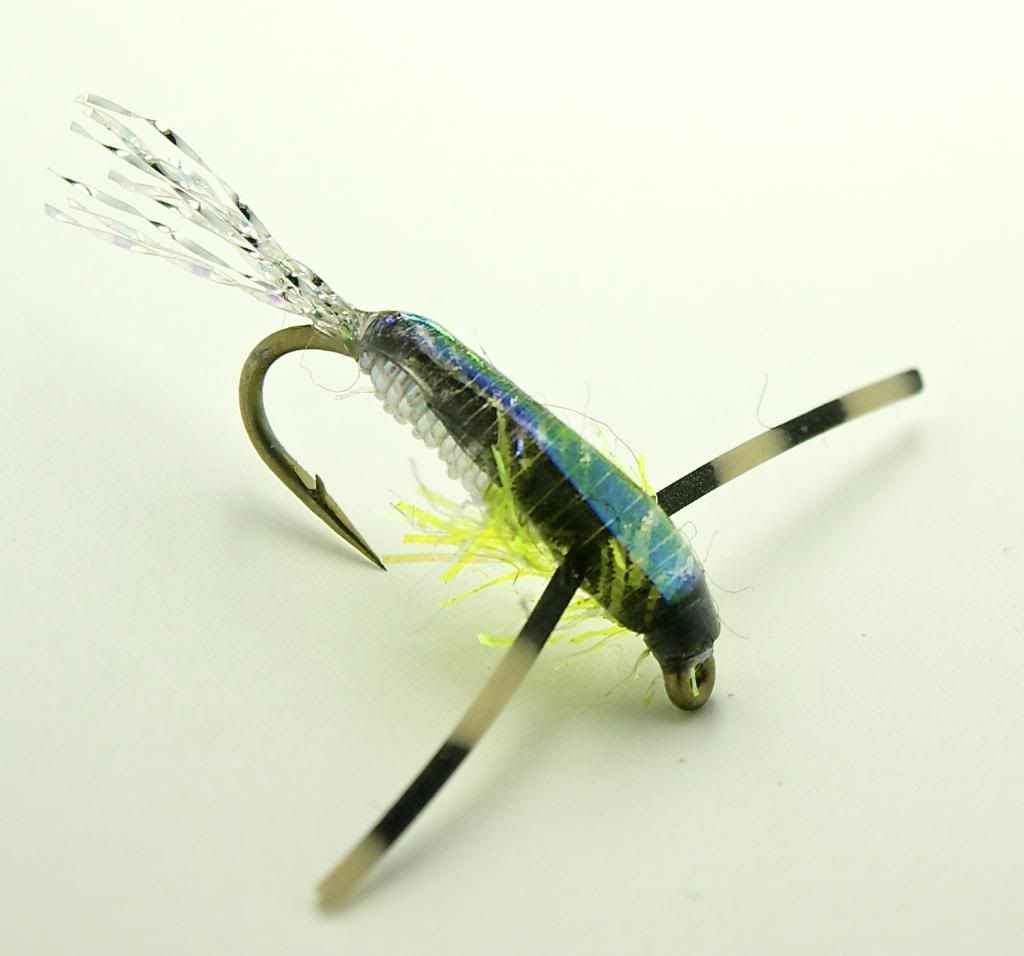

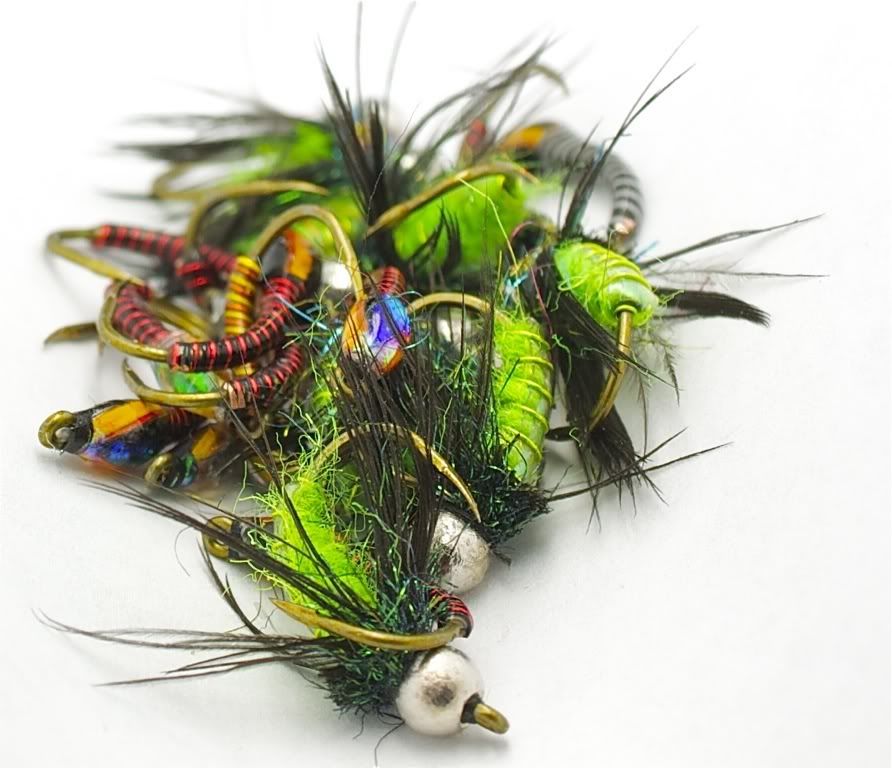
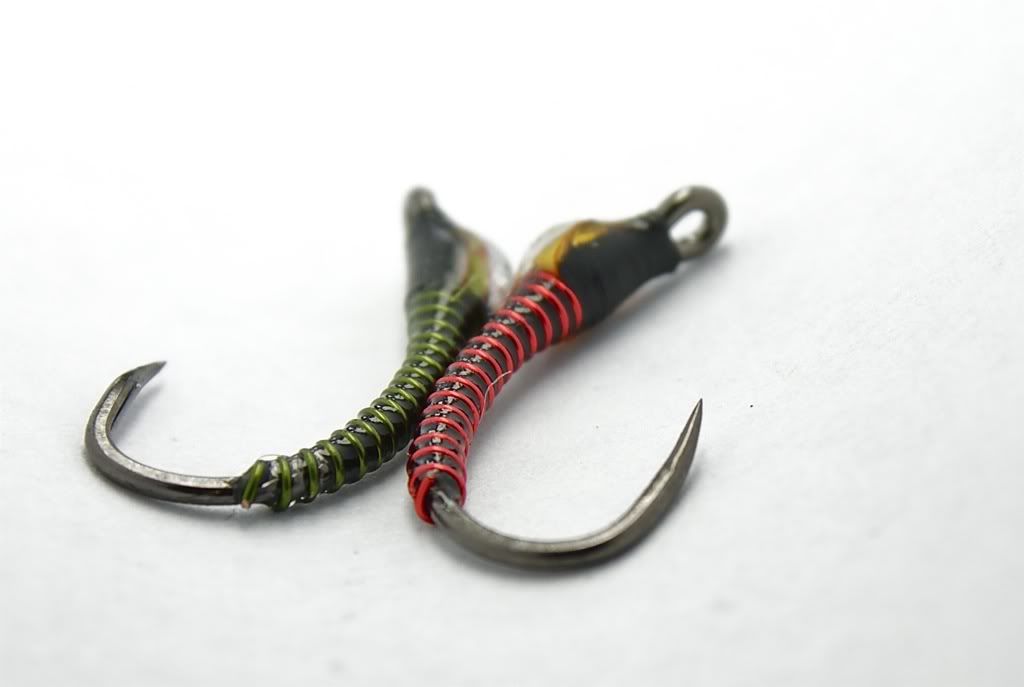
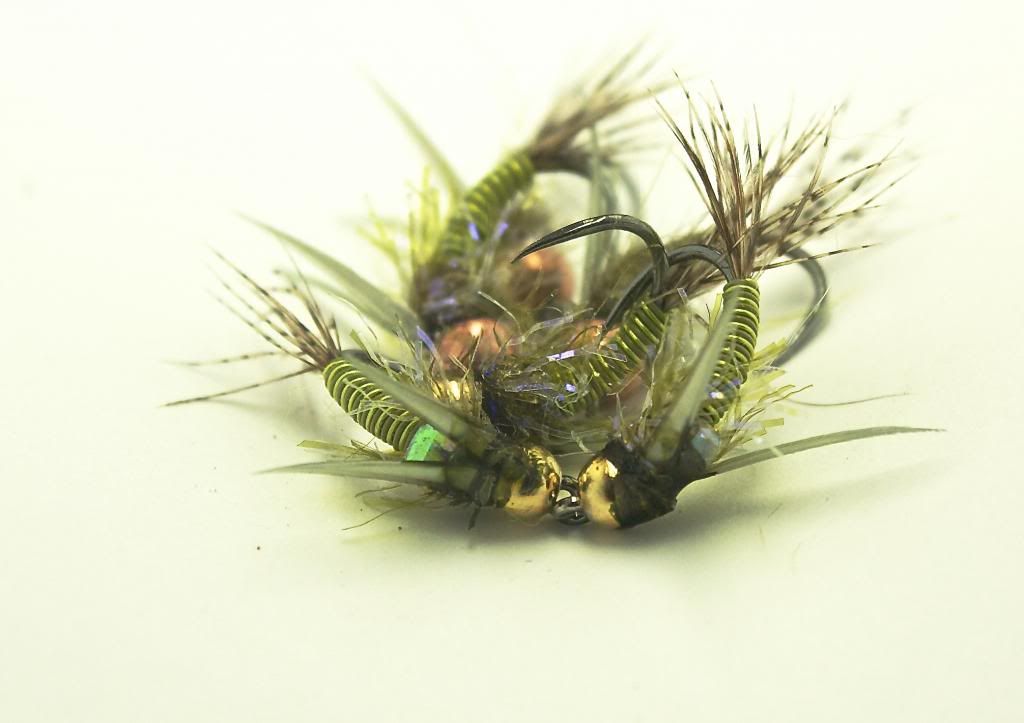
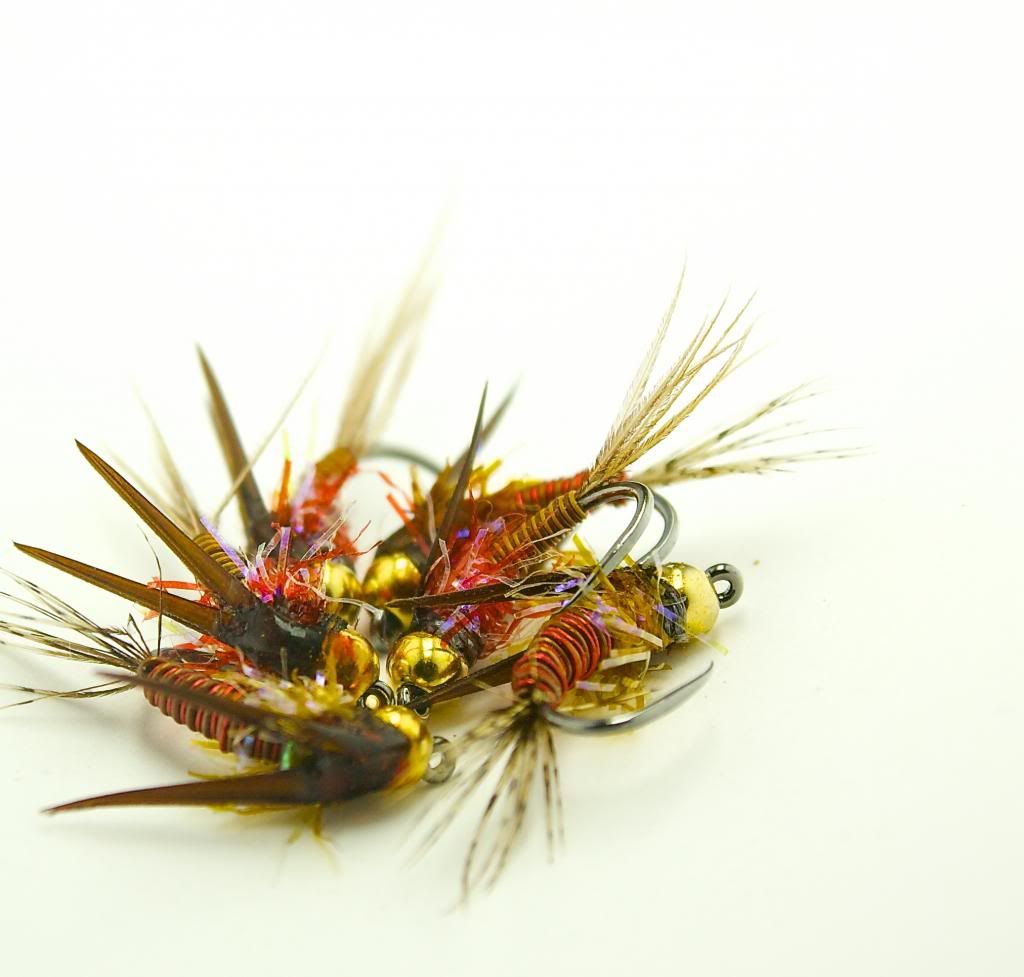
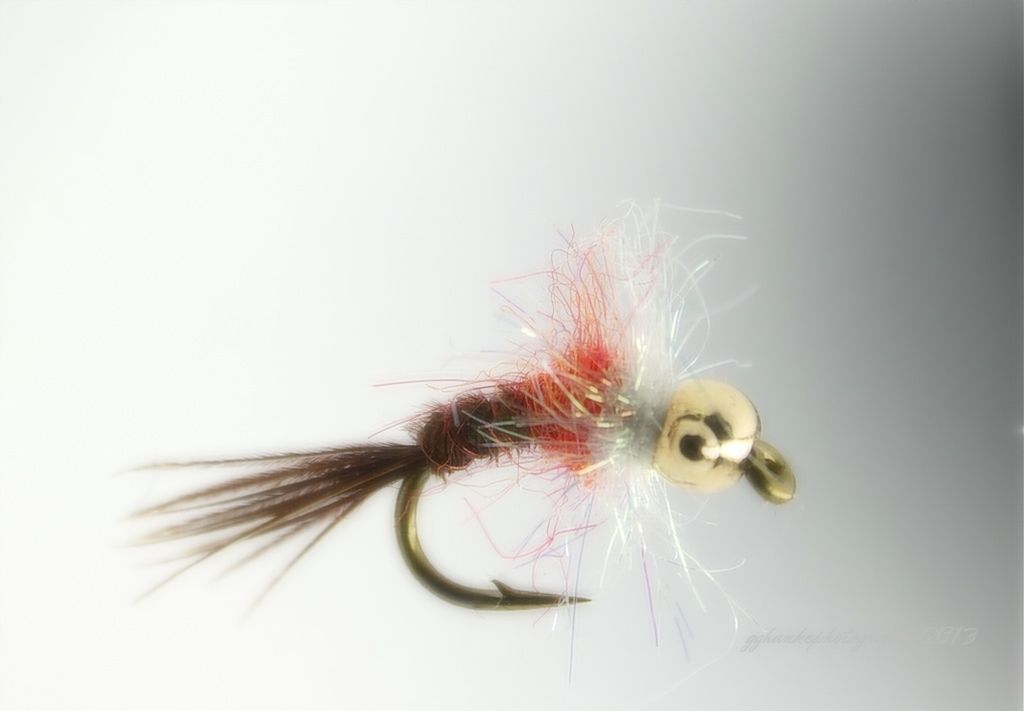
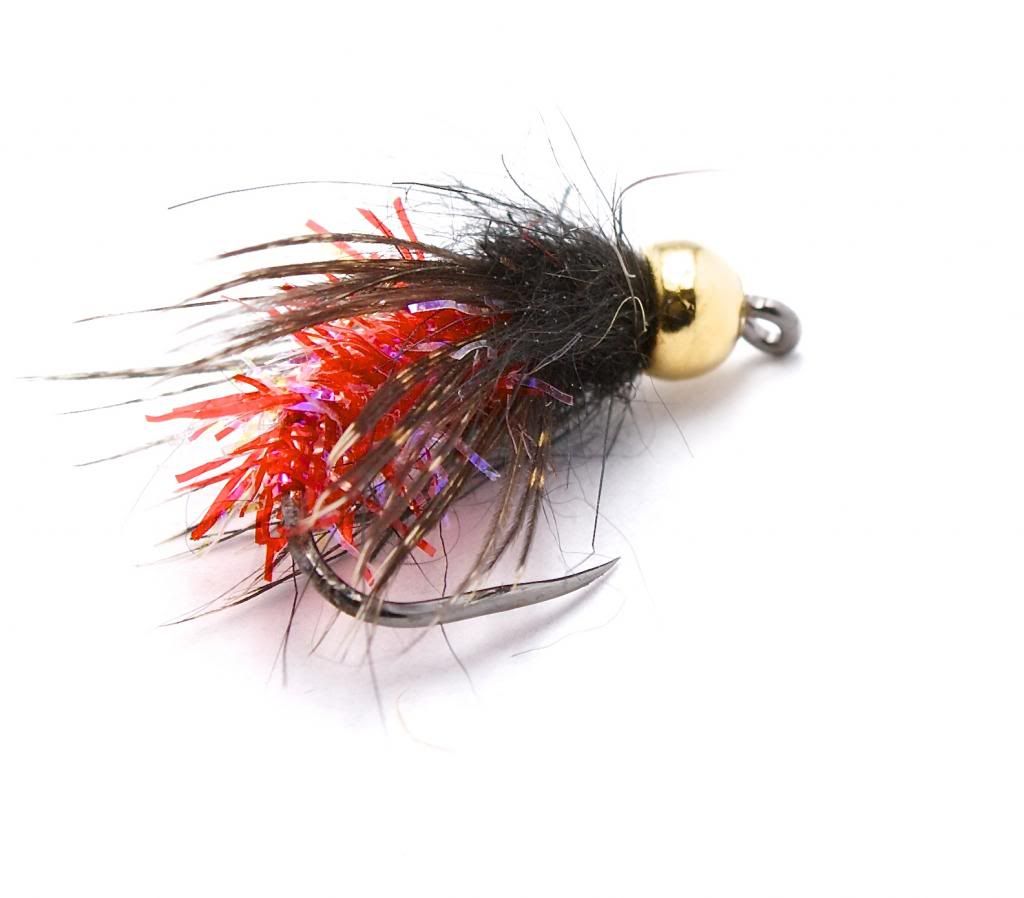
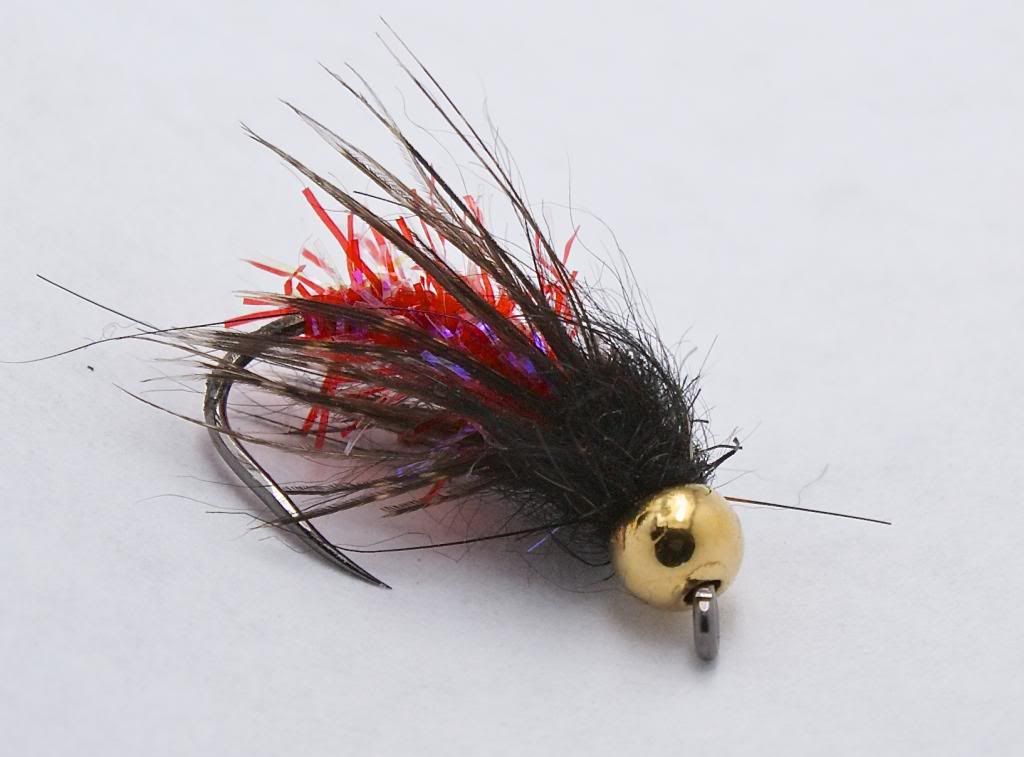
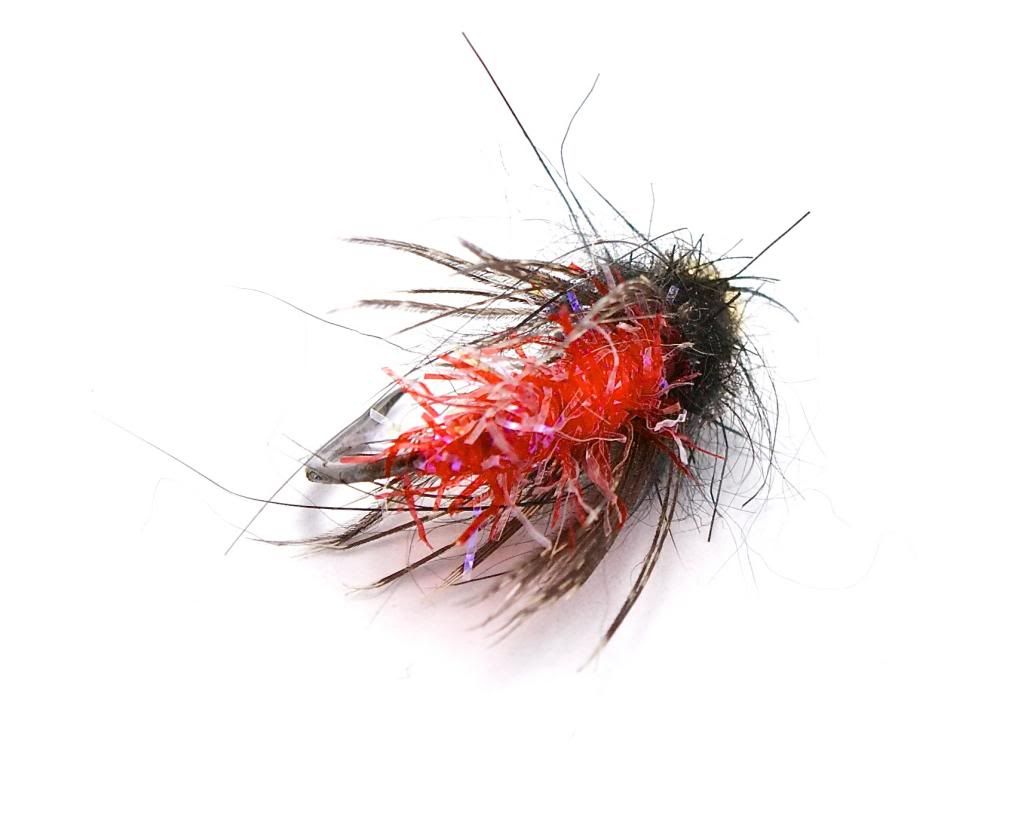
Nano Silk Thread
in General Chat - Fly Fishing Related
Posted
Pretty darn good thread I would say. I have been tying with this for 2 years now. It certainly has improved my tying in many ways and there are many little tricks that have been developed because of the threads strength and ability to cut material where needed.